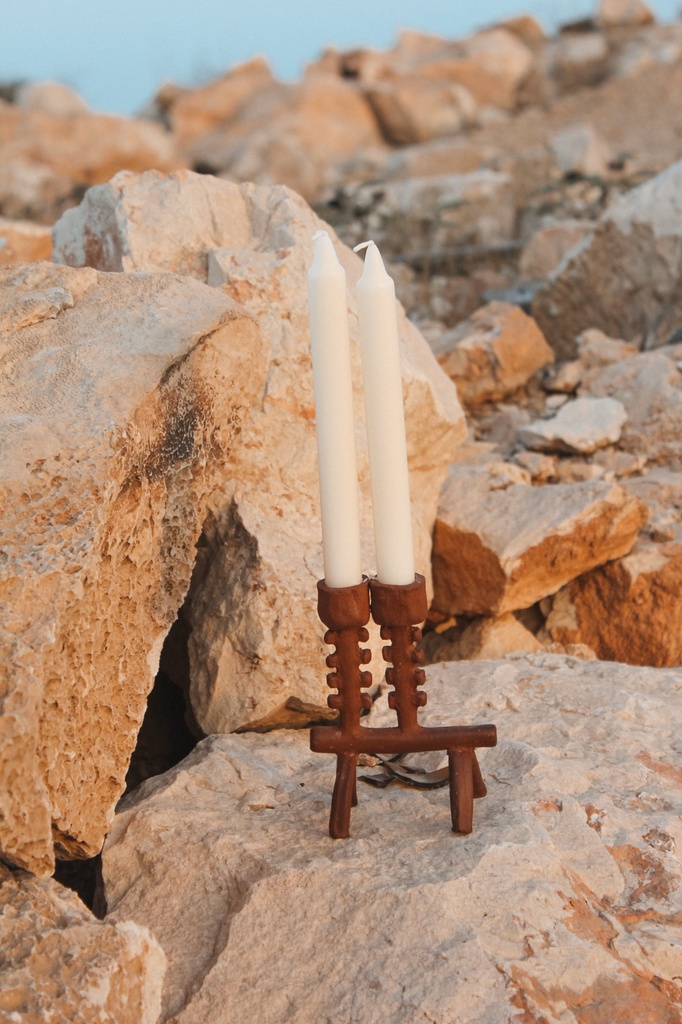Description:
A modern take on the Nubian Ibex and inspired by the ancient rock art found in Dhofar caves of the Ibex, an animal that still roams the tops of the Dhofar Mountain ranges until this very day.
The Ibex was a mythological creature that was closely associated with the Moon God Sin. It’s crescent shaped horns mirrored the symbology of the crescent moon and to the people, it is a creature that lives at the very tops of the highest mountains therefore it is closest to the sky and in turn God.
You can also find the Ibex masterfully carved on the limestone Frankincense burners, found in the moon God Sin (Pronounced “seen”) Temple in Samahram*
*Samahram is an ancient port town in Dhofar that trades Frankincense to Asia, Europe and Africa. Protected by mythological stories, this town was reinforced to provide safety to the artisans, frankincense stores and people who temporarily lived here during the Frankincense harvest and trading season.
Why candle Holder?
We transformed this ancient artifact into a candleholder to enhance your home’s décor, it can be used for self-care, personal rituals, beauty and spark conversations about its historic context.
Also using candles in your home can be more than a source of ambient light. You can harness the transformative energy of fire by setting an intention or doing a fire meditation.
Our Process:
Each candle holder is built by hand using Terracotta. Each piece takes half a day to complete, a week to dry and 2 firings to get to this result. This process started in Fatma’s Studio April 2024.
Disclaimer:
1. Each item is handmade and unique – though the same techniques are used, no candle holder is exactly the same and will vary in height, width and finishing.2. The piece that you receive may look different than pictured.
3. Never leave the candles unattended. Burn within sight. Keep away from flammables. Keep away from children and pets.
4. Our research on Dhofar history is continuous and does not aim to influence
5. You can find the original Frankincense burner with Ibex carvings at the Oman Across Ages Museum in Manah
